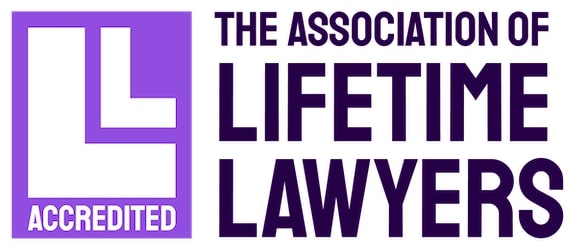Going through a divorce is tough. Not only must you cope with the emotional distress of your marriage breaking down, but there’s also a great deal of uncertainty about the future. Where will you live? Where will your children live? How will you cope financially? With these questions hanging over you, thinking long-term can be difficult and pensions are probably the last thing on your mind. However, to secure the best possible outcome, it’s essential to consider all assets in the matrimonial pot – everything you and your ex owned together or separately during your marriage. Although pensions may not immediately impact your finances, for many married couples, they are the second-largest asset in the matrimonial pot, following the family home. Unsurprisingly then, overlooking pensions completely or making a poor decision on how to handle them could leave you financially worse off in the future. To help you avoid making a mistake, we’ll explain how pensions are split in a divorce in the UK and the potential implications of the approach you decide to take.

How are pensions split in a divorce?
In the UK, pensions tend to be included in the matrimonial pot, meaning they will be shared between a couple on divorce. Whilst this may sound straightforward, determining the value of a pension and how to divide it appropriately can be extremely difficult, particularly for defined benefit pensions. There are three methods of settlement that can be used to divide pension savings:
- Pension Sharing Orders (PSO)
- Pension Attachment Orders (PAO)
- Offsetting
In some cases, multiple methods of settlement may be required.
What is a pension sharing order?
A pension sharing order (PSO) instructs a divorcing couple to divide their pension savings, providing both parties with a pension in their own name. The division isn’t strictly 50/50; the judge can order the pension scheme member to transfer up to 100% of their pension savings to the other party. PSOs can be applied to any private pension and limited parts of the state pension. There will be what is called a ‘pension sharing annex’ attached to your financial order upon divorce. This is something that can be agreed between you and then later ratified by a judge to make it legal, final and binding.
Unlike PAOs or offsetting, PSOs offer a clean break financially whilst still ensuring that both parties have a pension to support them later in life. It also avoids the need to compare the value of your pension savings to other shared assets, such as property, which can be challenging and result in unfair settlements.
Despite these benefits, PSOs can have significant tax implications that may impact the value of your pension. It’s essential to understand these before proceeding. In addition, most but not all pension providers charge an administration fee for the implementation of pension sharing orders.
What is a pension attachment order?
With a pension attachment order (PAO), formerly known as pension earmarking, both parties keep ownership of their own pensions, however, one party will be instructed to pay a percentage of their pension to the other party when received in retirement. This can cover both regular pension payments and tax-free lump sum payments.
Not only does this approach fail to deliver a clean break financially, but it also leaves the individual receiving the benefit with little financial security. With a PAO, payments will cease when the pension owner dies or if the individual benefitting from the order remarries. Additionally, either party can request to change the order at any point, providing both parties with little certainty about the future. The many disadvantages of PAOs make them an unpopular option and, as such, their use is becoming increasingly rare.
What is offsetting?
Offsetting is when a divorcing couple reach an agreement that one of them will give up their right to receive a pension in exchange for another ‘equivalent’ asset (keep in mind the word equivalent). As the largest asset in most matrimonial pots, this agreement is usually based on one party giving up part or all of their share in the family home.
Offsetting can be a particularly attractive option for couples with children as it provides a way for one parent to stay in the family home, minimising the impact on their children. Like PSOs, offsetting can also provide a clean break financially if handled correctly.
Whilst offsetting might seem like a quick and simple solution, it is often much more complicated. Comparing the value of pension savings with the value of other assets is like comparing apples and oranges. This makes identifying an ‘equivalent’ asset very tricky and, as a result, these agreements have the potential to result in really unfair outcomes.
Unlike PSOs and PAOs, offsetting does not require a court order. However, if you choose this route, it is strongly recommended that you still seek a final order from the court to formalise the agreement. Without one, either party can dispute the agreement and seek a new court order in the future.
How do you value a pension?
Before you can move forward with any of these options, you’ll first need to determine how much your pension is worth (as will your ex), including both your state and private pensions.
How to find out your state pension value
In most cases, state pensions can’t be shared after divorce, however, the court will need to take them into account to deliver a fair outcome. You can check your state pension value on the government website.
How to find out the value of your private pension
You have two options when it comes to determining the value of your private pensions. The first option is to use the Cash Equivalent Transfer Value (CETV) supplied by your pension provider. This has been a popular option for some time, however, a recent report by the Pensions Advisory Group warned legal professionals that valuations provided by pension companies are often inaccurate and, as a result, are not a reliable way to reach a fair financial settlement.
The second option is to invite an actuary to prepare a report setting out a variety of scenarios regarding your pensions and to determine what percentage share each spouse should receive to provide equality of income upon retirement. At Scott Bailey, we strongly advise our clients use this service, particularly if the transfer value of their pension savings is over £100,000. Whilst this report usually costs a few thousand pounds (shared equally with your ex), relying on CETVs alone could cost you significantly more in the long run.
What is a Cash Equivalent Transfer Value (CETV)?
Your pension has a Cash Equivalent Transfer Value (CETV). It’s the amount of money your pension provider would be required to pay to a new provider if you decided to move your pension. Whilst finding out your CETV is still a good starting point when trying to determine the value of your pension savings, the Pension Advisory Group’s report shows that these valuations should not be relied upon. CETVs are also only an indication of the current value of your private pension. It provides no insight into what your income will be when you reach retirement age.
How to get your CETV
- Request a Cash Equivalent for Divorce Purposes from your pension provider – you must do this for every single one of your private pensions. In order to do this, you will be required to submit a pension enquiry form, which can be downloaded from the government website. Your first request is usually free but some pension providers charge a fee for additional enquiries.
- For any defined benefit pensions you own, you will also be required to provide a benefit statement. To get this, you must write to your pension provider and request it.
- Make sure you request a full transfer pack for divorce purposes when you request either of these documents from your pension provider. They should provide this anyway but sometimes they don’t. The full transfer pack will be required if the court is to make any orders regarding your pensions and having to request it further down the line could hold up the process.
Why can’t you compare pensions to other assets accurately?
Now that we’ve explained how you can find out the value of your pension, you might be wondering why this information can’t be used in an offsetting agreement to reliably deliver a fair outcome. It’s important to remember that the value of your pension savings could change significantly by the time you reach retirement age. What may have seemed like a fair trade at the time of your divorce, could leave one party financially worse off further down the line.
Pensions are also subject to different taxes than other assets that may be included in an offsetting agreement. For example, you will be required to pay income tax on pension payments you receive when you reach retirement age, however, you would not be required to pay any tax if you received full ownership of the family home through an offsetting agreement.
It’s important to think about pensions in the context of their future value, rather than their current value. However, as accurately determining the future value of a pension isn’t possible, there is no way this asset can be reliably traded for other assets during divorce proceedings.
In most cases, a pension sharing order based on the recommendations of an actuary’s report is the fairest and most reliable way to handle pension savings.
Pensions are just one of the many complex issues that must be navigated during divorce proceedings. Learning about how pensions are split in a divorce is a great starting point, but due to the complexities involved, it’s always worth seeking expert legal advice. At Scott Bailey, our specialist divorce solicitors are here to support you. They have a wealth of experience handling all aspects of the divorce process and will ensure you achieve the best possible outcome. If you’d like to arrange a consultation with one of our solicitors, get in touch today.










